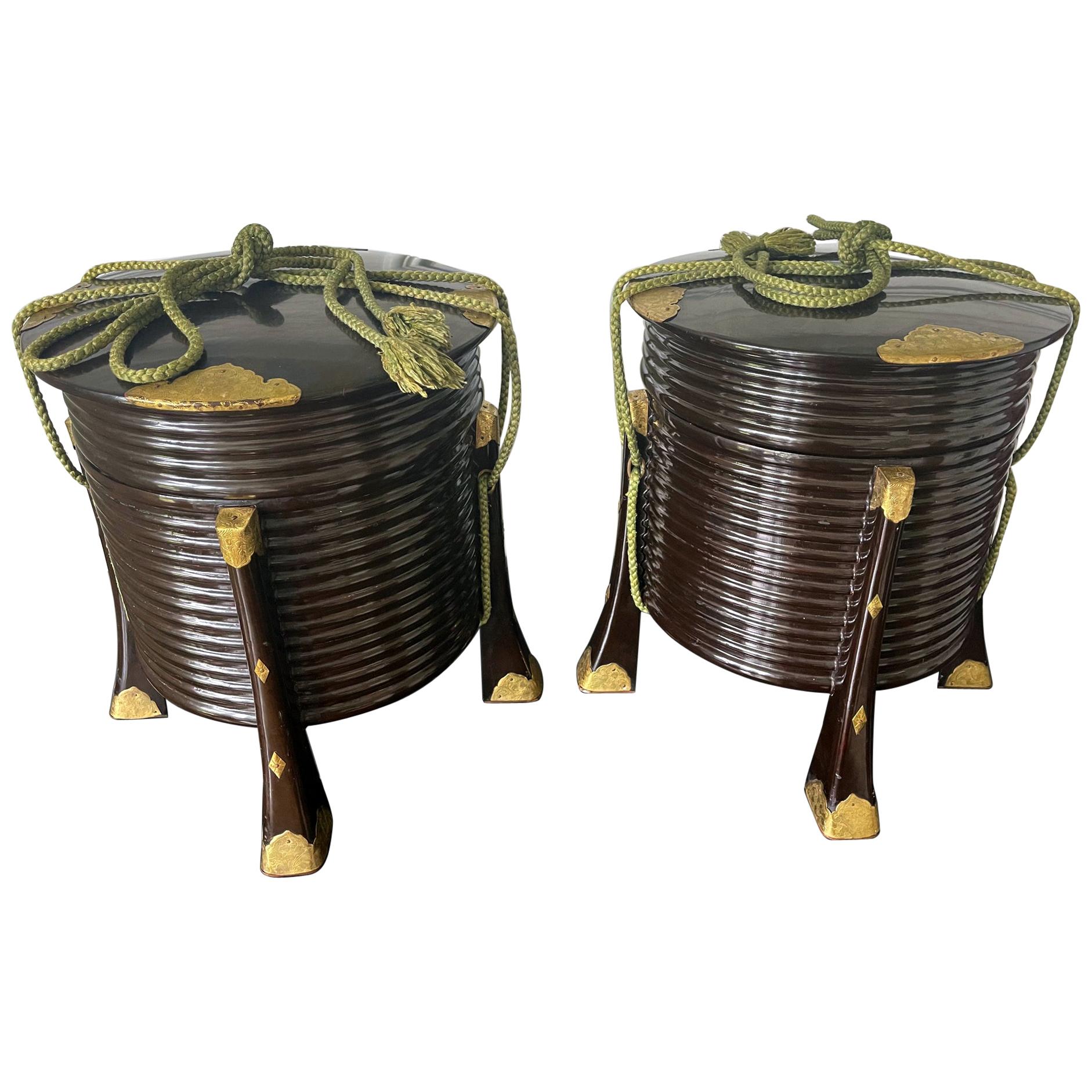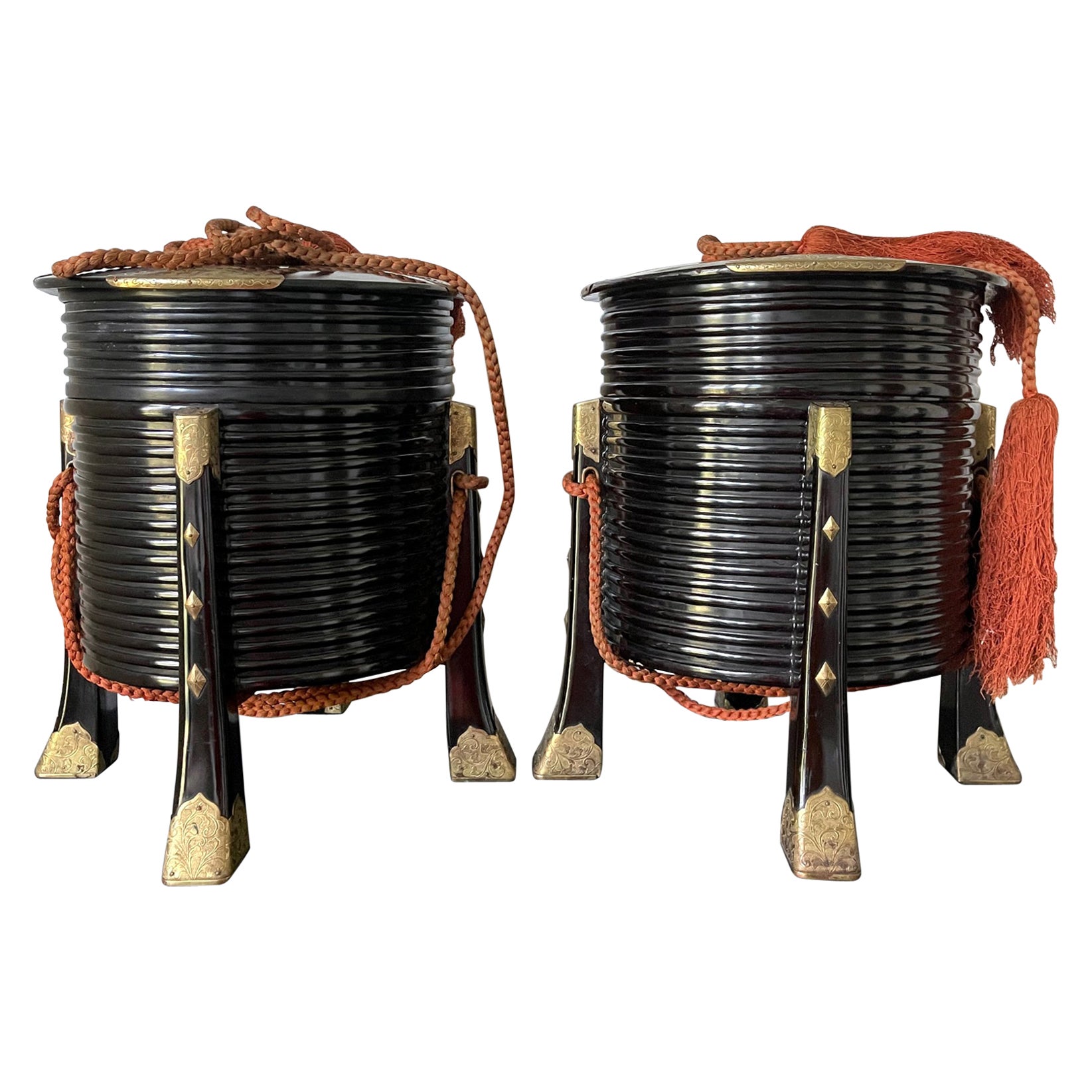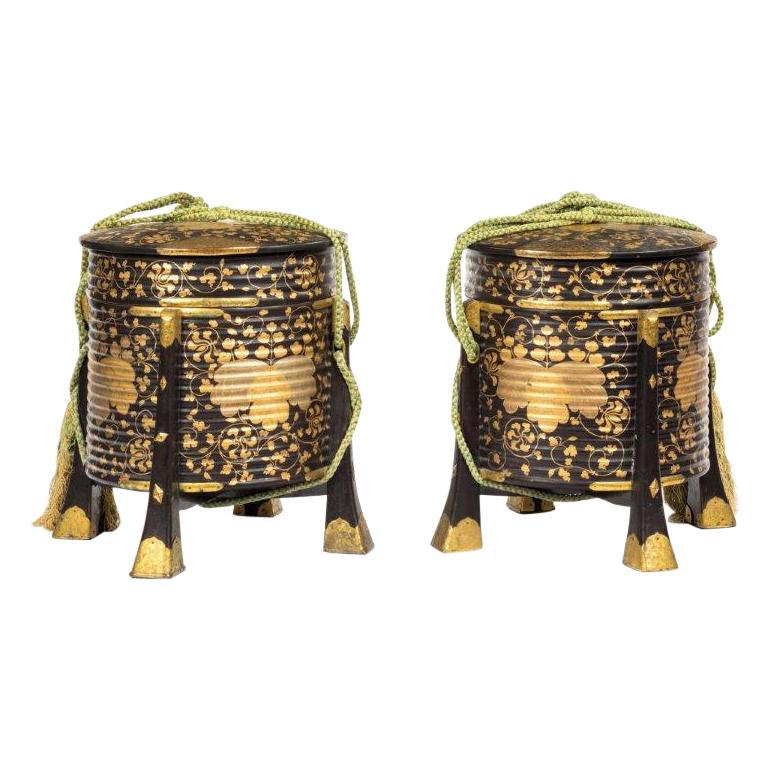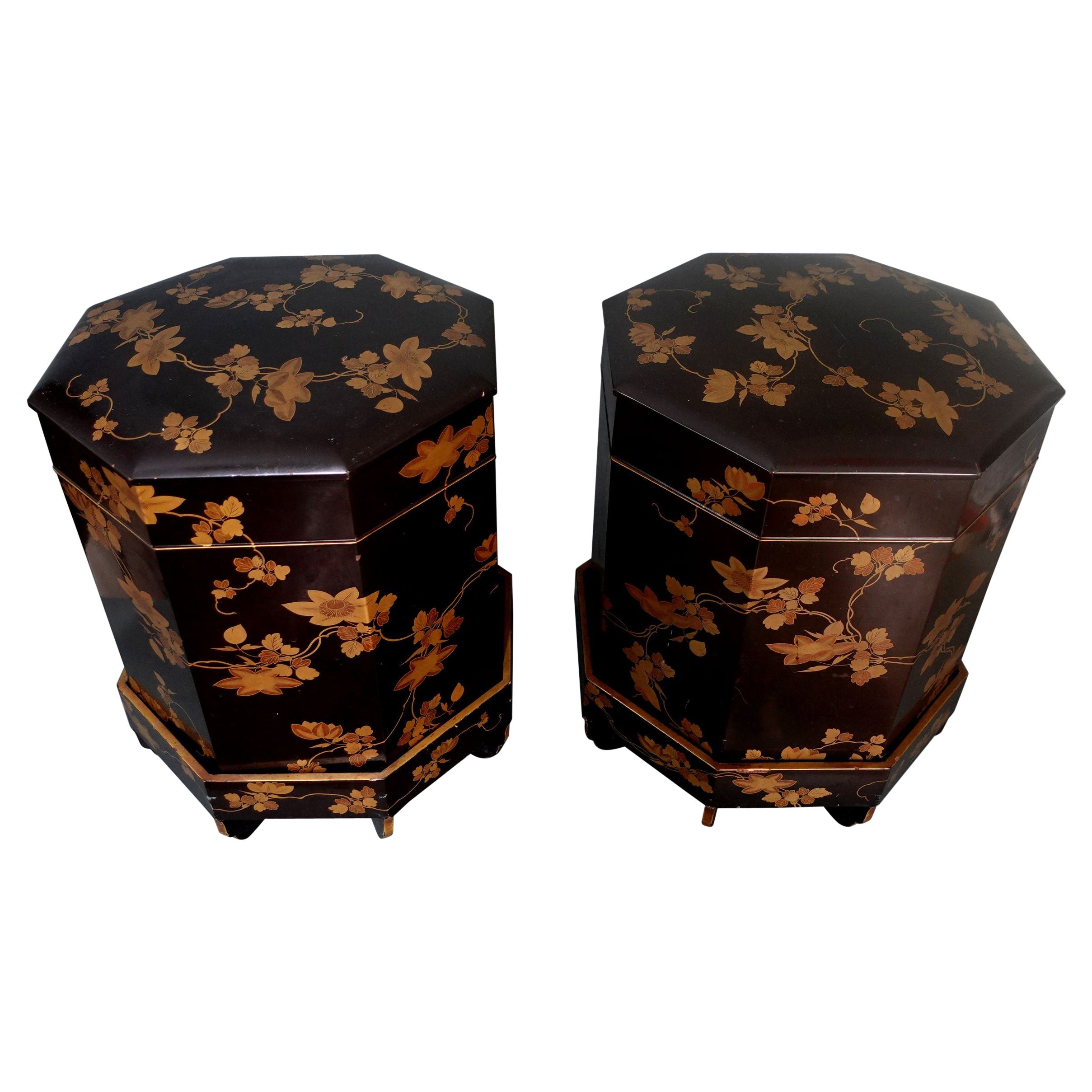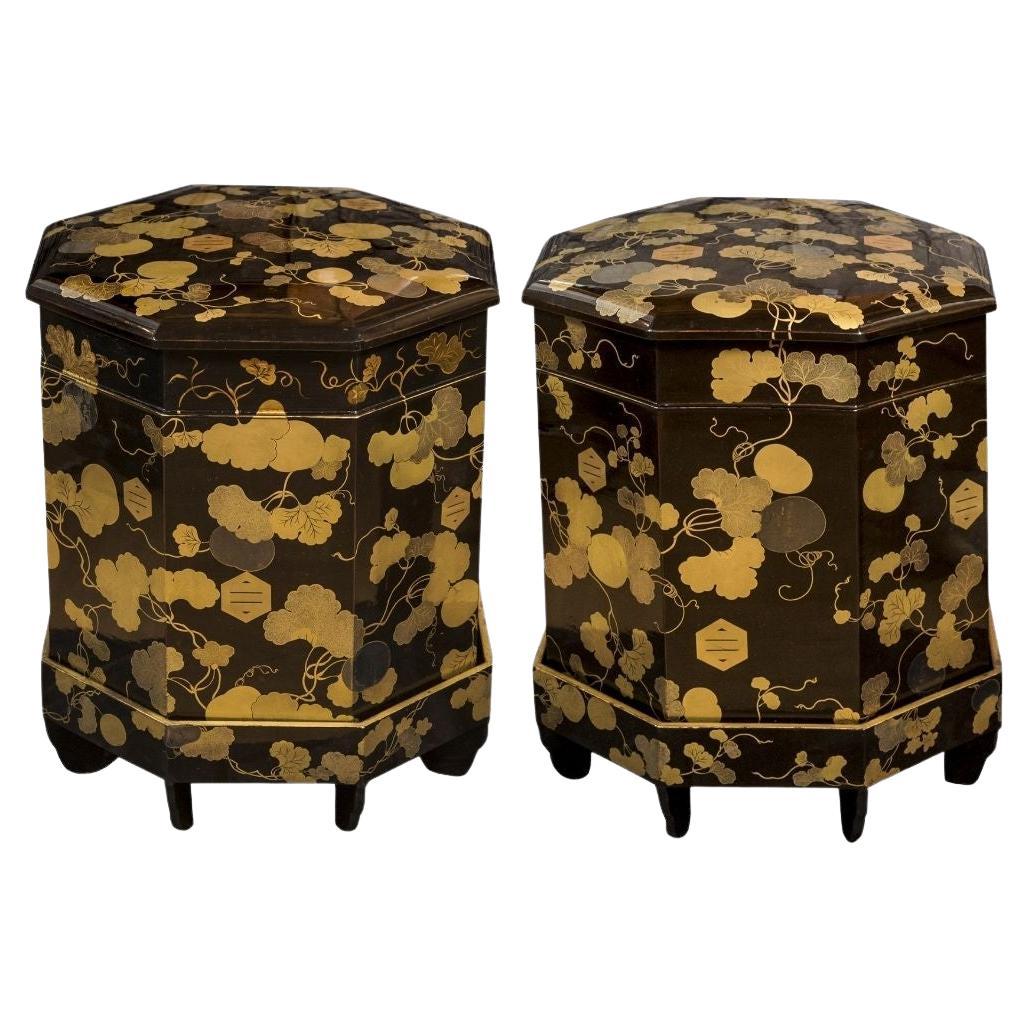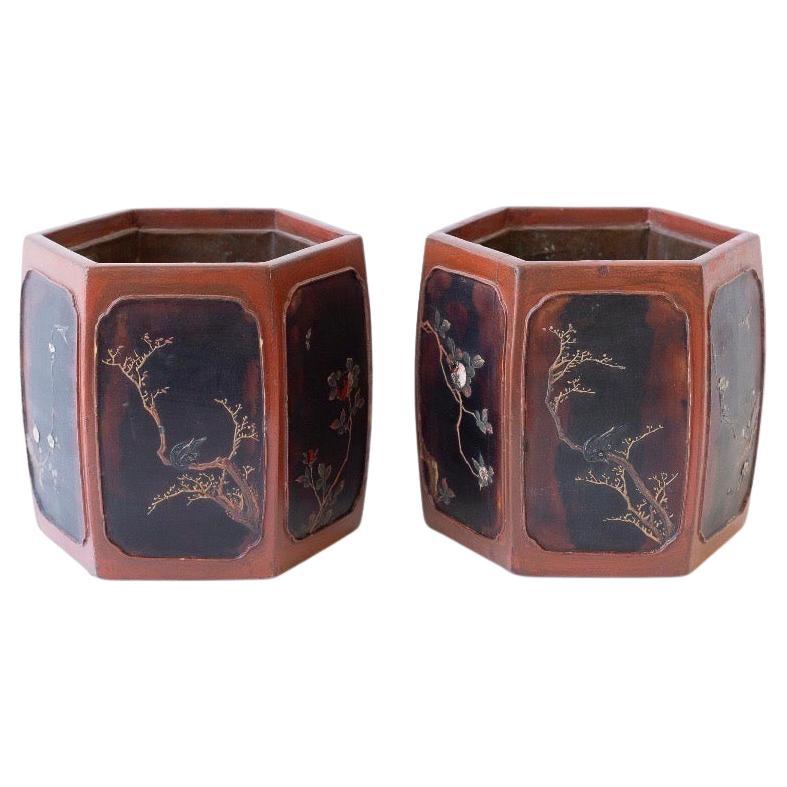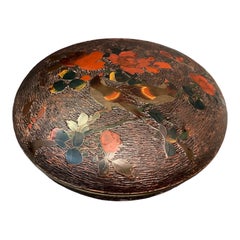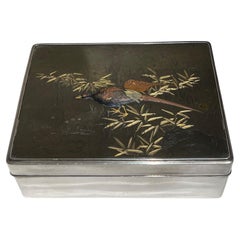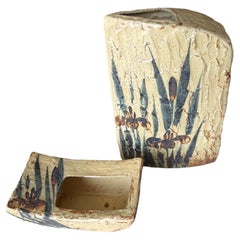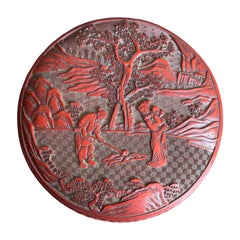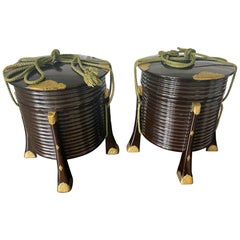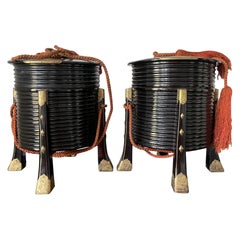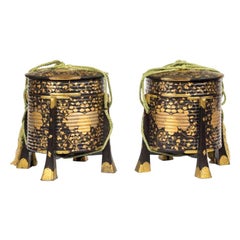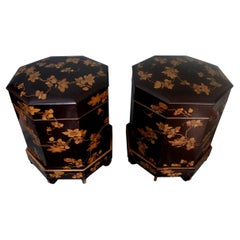Items Similar to Japan, Pair of Hokai boxes in lacquered wood, Edo period, 1829
Want more images or videos?
Request additional images or videos from the seller
1 of 10
Japan, Pair of Hokai boxes in lacquered wood, Edo period, 1829
$9,217.36per set
£6,895.20per set
€7,690per set
CA$12,690.35per set
A$13,888.07per set
CHF 7,338.62per set
MX$165,763.26per set
NOK 93,649.99per set
SEK 85,650.54per set
DKK 58,589.11per set
Quantity
About the Item
Japan, Pair of Hokai boxes in lacquered wood, Edo period, 1829
Japan, Rare Pair of Hokai boxes in lacquered wood, Edo period, dated Bunsei 12, 1829.
Hokai boxes are traditionally used in Japan to hold and transport shells for the game of Kai-awase but are also used as picnic boxes.
The shell game (kai-awase) dates back to the Heian period (9th-12th century) and involves putting together pairs of shells. The inside of the shells, traditionally clams, are painted or engraved with verses, and the challenge is to find the two parts that form a complete theme or poem.
This game goes beyond simple entertainment to take on a deep symbolic meaning. In addition to stimulating the mind and memory, it is charged with spiritual and aesthetic connotations, inviting participants into meditative contemplation of harmony and duality in the universe. As a result, this type of box often constituted precious wedding gifts.
These boxes are always arranged in pairs, in keeping with the nature of the game which consists of finding the corresponding halves of the shells.
Each box is made of wood with horizontal grooves and a slightly domed lid. They are supported by four slightly flared legs, and decorated with brass fittings. They have their original ropes and their transport boxes.
These hokai boxes feature rare trompe l'oeil decorations where superimposed sheets of paper reveal patterns of legendary characters emerging from their shadows, made in polychrome lacquer on a black background.
Trompe l'oeil and the graphic use of shadow as decorative motifs, present in Japanese art from the Edo period, exerted a fascination on European artists at the end of the 19th century, particularly in the Japonisme movement. and new art.
Figures such as Toulouse Lautrec, Henri Rivière and the Chat Noir shadow theater in Paris, or even Steinlen, were deeply marked by the Japanese aesthetic discovered through Japanese prints and other objects collected in the Parisian intellectual circles of the end of the 19th century.
Shadow puppets, with their subtle play of light and darkness, nourished the imagination of these artists, thus contributing to the evolution of artistic forms in Europe at that time.
Beyond their aesthetic and historical value, these Hokai boxes and their exceptional decor embody a fascinating bridge between cultures, testifying to the dynamic exchange of ideas and artistic influences between the East and the West during the 19th century.
The dimensions of the Hokai boxes are 47.5 cm x 47.5 at the feet. Height 43cm.
They have retained their original protective boxes. These storage boxes show some wear and defects. They bear the handwritten date of Bunsei 12 corresponding to 1829.
Good general condition, small scratches from use and small cracks on the bottom. No structural defect, no restoration.
- Dimensions:Height: 16.93 in (43 cm)Width: 18.71 in (47.5 cm)Depth: 18.71 in (47.5 cm)
- Sold As:Set of 2
- Style:Chinoiserie (Of the Period)
- Materials and Techniques:
- Place of Origin:
- Period:
- Date of Manufacture:1829
- Condition:
- Seller Location:PARIS, FR
- Reference Number:1stDibs: LU6491241694412
About the Seller
5.0
Recognized Seller
These prestigious sellers are industry leaders and represent the highest echelon for item quality and design.
Established in 1982
1stDibs seller since 2022
7 sales on 1stDibs
- ShippingRetrieving quote...Shipping from: PARIS, France
- Return Policy
More From This Seller
View AllLarge Japanese Cloisonné Box and Cover, Japan, Meiji Period, 19th Century
Located in PARIS, FR
A rare Japanese bark tree large cloisonné box on metal from the Meiji period. Usually bark tree cloisonné was on porcelain (totai Shippo)
A very attracti...
Category
Antique Late 19th Century Japanese Metalwork
Materials
Metal
$2,517 Sale Price
25% Off
Box signed Katsutoshi Koku, Japan, Meiji period (1868-1912)
Located in PARIS, FR
Box signed Katsutoshi Koku, Japan, Meiji period (1868-1912)
Rectangular silver box bearing the Japanese junjin hallmark, signifying pure silver, made during the Meiji period (1868-1...
Category
Antique Late 19th Century Japanese Decorative Boxes
Materials
Silver
Japan, Set of Two Japanese Vases for Flower Arrangement, Ikebana
Located in PARIS, FR
Rare ceramic set of hand made vases Japanese flower arrangements. Very attractive even without flowers.
Hand made, hand painted and signed by the ar...
Category
Mid-20th Century Japanese Vases
Materials
Ceramic
Chinese Cinabar Lacquer Hand Carved Box, China, Qing Dynasty 19th c.
Located in PARIS, FR
A fine antique Chinese red cinnabar lacquer lidded round box carved with a scene with a man working and a mother holding a child within a rocky landscape with trees.
The "dragon's...
Category
Antique Mid-19th Century Decorative Boxes
Materials
Lacquer
$2,397 Sale Price
20% Off
Japan, Bamboo basket hanakago by Tanabe Chikuunsai II (1910-2000).
By Tanabe Chikuunsai II 1
Located in PARIS, FR
Japan, Bamboo basket hanakago by Tanabe Chikuunsai II (1910-2000).
Tanabe Chikuunsai II (1910-2000), based in Osaka and Sakai, was the son of Tanabe Chikuunsai I. He was the second...
Category
20th Century Japanese Decorative Baskets
Materials
Bamboo
$3,643 Sale Price
20% Off
Rare Japanese Folding Screen, Kayo Zu, Falcons on a Perch, Soga School, Edo
Located in PARIS, FR
Six-Panel Folding Screen, Kayo Zu, Falcons on a Perch, Soga School, Edo Period, 18th Century
This six-panel folding screen, of the oshi-e hari type (paintings mounted on screens), i...
Category
Antique Mid-18th Century Asian Edo Paintings and Screens
Materials
Wood, Lacquer, Paper
You May Also Like
Pair of Large Antique Japanese Hokai Lacquer Boxes
Located in Atlanta, GA
A pair of Japanese lacquer lidded Hokai boxes with chased brass hardware and original ropes. Hokai boxes are traditionally used in Japan to store and carry s...
Category
Early 20th Century Japanese Japonisme Lacquer
Materials
Wood, Lacquer
Pair of Large Antique Japanese Hokai Lacquer Boxes
Located in Atlanta, GA
A pair of Japanese lacquered lidded Hokai boxes with chased brass hardware and original ropes. Hokai boxes are traditionally used in Japan as the containers ...
Category
Early 20th Century Japanese Japonisme Lacquer
Materials
Wood, Lacquer
Pair of Edo Period Black and Gold Lacquer Samurai Helmet Boxes
Located in Lymington, Hampshire
A pair of Edo period black and gold lacquer Samurai helmet boxes (Hakko Bako), each of ribbed cylindrical form with a lid, a black lacquer interior,...
Category
Antique 19th Century Japanese Edo Lacquer
Materials
Lacquer
A Pair of Large Japanese Lacquer Kaioke Boxes
Located in Norton, MA
Japan, late Edo, two big octagonal covered shell game boxes resting on footed stands, with makie-e decorations depicting flowering vines on a black lacquer ground,
They are still in ...
Category
Antique 19th Century Japanese Decorative Boxes
Materials
Lacquer
$18,500 / set
Japanese pair of kaioke boxes or Hokkaibako made of black and gold lacquer
Located in PARIS, FR
Two large eight-sided kaioke boxes in black lacquer, decorated with mon and maple leaves in golden lacquer.
These are usually octagonal boxes containing the painted shells used in ...
Category
Antique Late 19th Century Japanese Meiji Lacquer
Materials
Gold
Pair of antique Japanese Meiji Period Lacquer Hibachi with Intricate Inlay
Located in New York, NY
A beautiful pair of Japanese Meiji period (1868-1912) lacquer braziers, or "hibachi".
These may be used as beautiful planters, since they have copper lining, but these were created ...
Category
Early 20th Century Japanese Planters, Cachepots and Jardinières
Materials
Wood, Lacquer
More Ways To Browse
Antique Storage Box
Japanese Wood Objects
Japanese Chinoiserie
Clam Antique
19th Century Puppet
Black Lacquer Chinoiserie Boxes
Go Game
Hokai Box
Marble Carved Box
Metal Sewing
Mother Of Pearl Trinket Box
Pair Chinese Boxes
Palais Royal Mother Of Pearl
Pyramid Box
Sewing Box Lacquer
Spice Boxes
Wood Turned Box
Art Deco Bakelite Boxes
